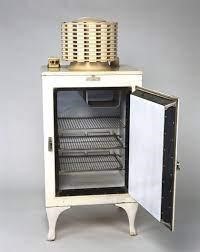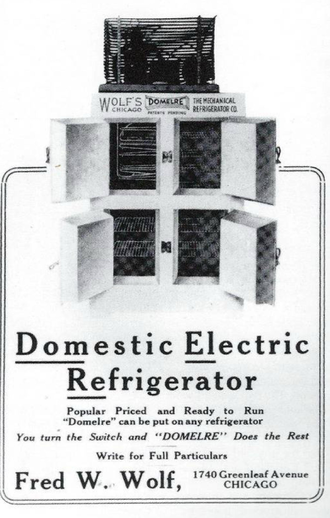Modern refrigerators against stomach cancer?
The number of new gastric cancer cases has been steadily decreasing each year in all western countries. What do modern refrigerators have to do with this?
Bacterium as a cause of gastritis
Is there ever any good news about cancer? Yes, there is! The number of new cases of gastric cancer per year has been steadily decreasing in all western countries for years. What do modern refrigerators have to do with this?
As a reminder, the main risk factors for the development of gastric cancer are chronic infection with Helicobacter pylori and/or a diet rich in nitrosamines. "It's the stress that causes the stomach ulcers!", I heard myself as a child. And my own dad, a chain smoker and a passionate person in general, would do "rolling cures" against his unpleasant stomach ulcers. Then, in 2012, I met the 2005 Nobel Prize laureate in medicine, Barry Marshall, at our sister university in Hong Kong. There, he was awarded a highly deserved honorary doctorate.
At the beginning of the 1980s, the two Australian researchers Barry Marshall (born 1951) and Robin Warren (born 1937) put forward the revolutionary hypothesis that the most serious cause of gastritis wasn't stress or poor diet, but a (previously unknown) bacterium called Helicobacter pylori. However, hardly anyone took this hypothesis seriously. Marshall had an idea, which he told amid the applause for his courage in Hong Kong: A self-experiment!
In other words, he heroically swallowed infectious Helicobacter cultures! Through these painful self-experiments, he succeeded in proving unequivocally that Helicobacter was the "bad guy". Later, it was found that, in addition to gastritis, the acid-resistant germs cause about 80% of all ventricular ulcers and more than 90% of all duodenal ulcers.
Barry Marshall: Self-experiment with Helicobacter cultures
Before the discovery of Helicobacter bacteria, gastric distress was typically treated by suppressing acid production in the stomach. Although in many cases this therapy eliminated the problems, a large proportion of patients suffered a relapse – a phenomenon that researchers failed to explain at the time. However, as early as the beginning of the 1980s, Robin Warren came across a possible explanation in his work: In about half of all biopsies of the stomach mucosa that he examined, he discovered small, curved bacteria that colonised the lower part of the stomach in particular. Wherever the pathogens were found, there were also signs of inflammation. This was a clear indication for Warren that these bacteria were involved in the development of the inflammations.
Together with Marshall, Warren finally succeeded in cultivating the bacteria in his laboratory at Australia's Royal Perth Hospital in 1982. Experts around the world, however, were not convinced: a bacterium could never survive in the inhospitable environment of the stomach at extremely low pH, let alone multiply. Consequently, in what later became a famous self-experiment, Marshall swallowed a pure culture of bacteria and developed acute gastritis within a few days, which was indeed attributable to the colonisation of his stomach's mucous membrane by Helicobacter.
Many questions still unanswered about Helicobacter pylori
What is the pathogen's strategy? A special enzyme of Helicobacter produces basic ammonia in the acidic environment of the gastric mucosa and thus neutralises the gastric acid. In response, the immune system releases proinflammatory substances. These trigger gastritis. Responding to the chronic inflammation in the lower part of the stomach, the upper part of the stomach produces more acid, which promotes the development of ulcers in the sensitive duodenum.
Nevertheless, there are still many unanswered questions today: According to Wikipedia, about half of the world's population is infected with Helicobacter pylori, but only 10 to 15 percent of those infected actually develop symptoms. One decisive factor seems to be the specific strain of bacteria that colonises the stomach. Another is the genetic predisposition of the person infected. It is likely that infection already occurs through early childhood contact with the mother or with other infected children.
Fresh foods help prevent stomach carcinomas
Thanks to Warren and Marshall's ingenious discovery, Helicobacter infections can today be detected beyond doubt, mainly with the help of antibody tests, through histological identification of the bacteria in biopsies or through a breath test. The combination therapy (triple therapy) of two antibiotics and a proton pump inhibitor (such as omeprazole, esomeprazole, pantoprazole, lansoprazole and rabeprazole) has meant that gastritis and peptic ulcers are no longer chronic diseases with an increased risk of cancer. They can be cured by short treatment.
The second piece of good news is that using a refrigerator correlates with a low risk of stomach cancer. Why? Fresh food is now always available, while less healthy preservation methods such as curing or smoking have been replaced.
Abandoning carcinogenic preservation methods
The process of curing involves treating fish, meat and sausage products with table salt, sodium, potassium salts of nitric acid (sodium or potassium nitrate), or nitrous acid (sodium or potassium nitrite), known as curing substances. Curing helps to preserve fish, meat and sausages and to make them heat-resistant as well as to retain and give them their characteristic red meat colour and aroma. For this reason, along with other preserving processes such as drying, smoking and heating, curing is a fundamental process for preserving foodstuffs all over the world. Only nitrites (NO2-) are used for the reddening, the curing aroma, and the inhibition of bacterial growth. These result from the nitrates (NO3-) used, which are enzymatically reduced to nitrites by certain microorganisms during long storage times.
The high salt content in cured meats is harmful to our health. When eaten in large quantities, bacon, smoked ham and sausages can have a carcinogenic effect. Heating the nitrite salts used in curing meat can produce nitrosamines. These substances have been shown to be carcinogenic in animal tests. And now, for a change, you know the positive influence of technology on our health.
2. FAZ on October 3, 2005 (faz.net)
3. Barry Marshall, Nobel Lecture in Stockholm, https://www.nobelprize.org/prizes/medicine/2005/marshall/lecture/




